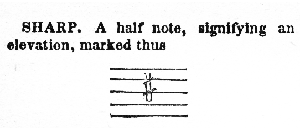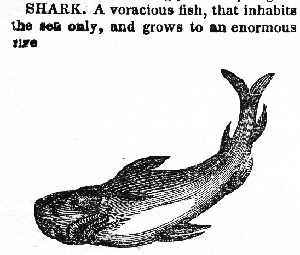I honor the reference-work creator—editor or author—whose task is to create a consistent model of the world from a given vantage. Maybe it’s a dictionary of science and technology, a reference on the mystery novel, or a guide to English words derived from Hindi; in each case a complex epistemological problem is faced, one that can’t be pondered for too long, but must be acted upon. Authors must be commissioned, an indexing scheme decided upon, illustrators hired, printing problems sorted out, typographical choices made, the needs of the publisher managed. After this, the editor needs a plan for the second edition. Like a holograph, which when divided still contains a partial view of the entire object, each entry, regardless of author, must stand to some degree on its own. The reader cannot be expected to have read the page prior, and cannot be expected to go on to the next page.
(Respect and jealousy were both profound when I found out, after years of friendship, that my neighbor was a secret contributor on William Gibson and Ayn Rand to Benet’s Reader’s Encyclopedia.)

Samuel Johnson was the most colorful of all of the dictionary compilers, but word-obsessed Eric Partridge (1894–1979) also deserves a spot in the pantheon of harmless lexicographical drudges; he produced a wild number of comprehensive reference works: an ample etymological dictionary Origins, dictionaries of underworld, RAF, Shakespeare, slang, and jargon, and a short guide to the shaggy-dog story.
His last major work was A Dictionary of Catch Phrases, and it alternates between describing strange, unknown linguistic artifacts that have fallen out of time, like ‘When I was in Patagonia’ (which makes no sense to me), and the specific provenance of statements so mundane it’s hard to believe they’re simply part of the language, like ‘it takes one to know one.’
when I was in Patagonia…! ‘Commander A.B. Campbell was one of the regulars on BBC radio’s Brain’s Trust, but it was on an earlier version of the programme, called Any Questions, that he came up with his famous phrase. Donald McCollough, the chairman, said: ‘Mr Edwards of Balham wants to know if the members of the Brains Trust agree with the practice of sending missionaries to foreign lands.’ C.E.M. Joad and Julian Huxley gave their answers and then Campbell began, ‘Well, when I was in Patagonia…’The latter entry is followed alphabetically by ‘it takes two to tango,’ whose origins lie in the popular song, and which was first spotted in the U.S. in the 1920s and Australia in the 1930s, and which is, as of 1975, slightly outmoded. Later, in the W’s, Partridge spells out the history of ‘some of my best friends are Jews,’ tracking it from its racist origins through its ironic modern usage.
In a book which uses the phrase as its title, Campbell recalled: ‘I got no further, for Joad burst into a roar of laughter and the other members of the session joined in. For some time the feature was held up while the hilarity spent itself. For the life of me I could not see the joke…I got hundreds of letters and it cost me a small fortune in stamps…Even today (1951), years after, I can raise a laugh if I am on a public platform and make an allusion to it.’
it takes one to know one. You’re as bad as the person you’re criticizing: late (?mid) C19–20. ‘‘He’s a thief.’—‘It takes on to know one.’’ (B.P., 1974). ‘In U.S., almost always applied to (male) homosexuals’ (J.W.C., 1977); ‘now obsolescent’ (R.C., 1978).
The saying owes something, I surmise, to the true story of Francois Jean Vidocq (1775–1857), a thief on the grand scale, whose talents so impressed the French authorities that he was recruited into government service, where he rose to the command of a highly special section of detectives. Cf the proverb set a thief to catch a thief. In the early 1920s, a very popular film series, Les Adventures de Vidocq, was being shown; it may have contributed to the genesis of the c.p.

Unlike the ‘creative’ author of plays or novels, the reference authors and editors must mind the future; they need to be as accurate as possible. If they’re worth anything, they want to create a definitive work, something that will encapsulate a discipline, consider opposing viewpoints, and avoid weighing the fashionable theories too heavily. In a dictionary of religion (Vergilius Ferm’s is my favorite, if old and incomplete), Muslims and Christians should get equal footing with Zoroastrians, Theosophists, and followers of Athena; one man’s Mormonism is another woman’s Yogic Flying, and an editor’s personal bias, say, toward the teachings of Jesus or the word of L. Ron Hubbard—were it allowed into the dictionary—would make the entire work suspect (‘it is suspect,’ say the Deconstructionists, who have dozens of dictionaries to cover their own theories). The perfect reference-work editor is perfectly unbiased, open to all opinions, and can keep no pet ideas. She is critical, requires terms to be explained clearly, and permits no proselytizing in her entries (otherwise the Encyclopedia of New York [highly recommended] would have Mets, Yankees, and antiquated Dodgers fans squaring off over the span of its hundreds of pages).
It is hard to choose more favorites; sometimes nothing but the Oxford Dictionary of Modern Thought soothes me, other times it’s The Timetables of History. But Public Works brings me back over and over. It’s a simple collage of government-published documents, printed in facsimile. It has the hand-hewn feel of the old Whole Earth Catalog and the weight of a phone book. Inside, a man named Walter Szykitka has organized and indexed guides to midwifery, advice on killing crop-eating bugs, plans for building a variety of log cabins, and methods of keeping your finances in order. ‘The idea was,’ Szykitka writes in his introduction, ‘that if you found yourself lost in the wilderness and had no other possession than [this] book, you would nevertheless be adequately prepared to survive…it would take you by the hand and guide you along in clear, easy-to-understand language, with appropriate sketches and diagrams, so that you could, if you so chose, finally come crashing out of the wilderness, with flags flying, in your self-made Land Rover with four-wheel drive, in a triumphant return to civilization.’ I find it to be perfect bedtime reading, and my dreams are filled with the care of corn crops and methods of collecting water after falling from an airplane.
The good reference work allows the reader to find his own story out of the collected materials; eyes and mind can wander, I can flip pages rather than follow a linear narrative. I’m navigating an ontology, the model of reality chosen by the editor. In a dictionary of science I begin to draw my own picture of science-in-general; skipping through a dictionary of catch phrases draws a portrait of the scatological tendencies of the English-speaking world, our endless need to nickname vaginas, and our ways of approaching racism. Public Works gives me fantasies of starting over with a few acres of farmland, a hammer, and a saw, and provides me with a vision of unelectrified reliance.

Sometimes the effort of the editor is totally misguided, and this reading journey is comically pathetic—it can be this way with old etiquette guides, preaching the right placement of spoons and the importance of child-beating, but in this case I specifically refer to 10,000 Dreams Explained, a legendary work of total, arbitrary hokum. It’s an old, uncopyrighted work, and thus appears often in bookstores in various editions because it’s in the public domain and can be easily repackaged and sold to the gullible. (A free version is available from Project Gutenberg.) Despite the best efforts of the introduction, it’s clear there is no method for arriving at the many explanations besides imagination, no connection between dream content and exegesis.
But the interpretations—holding that dreams arrive from the spirit world—are wonderful, associative nonsense. It’s as if someone took Edward Lear and made him write horoscopes.
Badger. To dream of a badger, is a sign of luck after battles with hardships.(God help the woman who dreams of a pomegranate-eating, goggle-wearing badger.)
Goggles. To dream of goggles, is a warning of disreputable companions who will wheedle you into lending your money foolishly.
Pomegranate. Pomegranates, when dreamed of, denotes (sic) that you will wisely use your talents for the enrichment of the mind rather than seeking those pleasures which destroy morality and health… To eat one, signifies that you will yield yourself a captive to the personal charms of another.

There are dozens of others—a Handlist of Rhetorical Terms, the ordering of The Complete Rhyming Dictionary, the old Sears catalogs, and Wall Street Words. And there’s the way the web has become a huge reference work, and will only become more of one. But I’d rather talk about my favorite of them all, a book I wish were printed directly on my brain tissue in impermeable titanium: The Domesday Dictionary, published in 1963 with the subtitle ‘Being an inventory of the artifacts and conceits of a new civilization.’ Every definition in its 316 pages is as limpid as a winter night:
Mushroom CloudStraight and clear—but then things begin to happen. Under the headword for Germany is a quote in untranslated Hebrew—the book tells us only that it’s Eccles. 4:1–3, which in the KJV is:
The hallmark of a nuclear burst. Truly a cloud: it is wet, cool and sometimes capped with crystals of ice. The fireball (q.v.) has expanded so rapidly that its temperature falls to a point where the water vapor in the air that has been updrafted condenses into droplets. These droplets are too misty to create rain, but they are large enough to reflect the white light of the sun. The mushroom shape has been formed by the initial column of material sucked up between the bust and the material’s outward swirling once within the fireball. The shape is fixed momentarily against the surrounding shock front. The cloud, now a billowy cumulus, passes upward through the subfreezing temperatures of the tropopause, being blown slowly shapeless by the winds. An amorphous mass, it reaches into the stratosphere. The heavy particles of the burst are far below, falling in the vicinity of ground zero. The cloud now contains the radioactive microdusts and gases of subsequent global fallout (q.v.). (194)
So I returned, and considered all the oppressions that are done under the sun: and behold the tears of such as were oppressed, and they had no comforter; and on the side of their oppressors there was power; but they had no comforter. Wherefore I praised the dead which are already dead more than the living which are yet alive. Yea, better is he than both they, which hath not yet been, who hath not seen the evil work that is done under the sun.There is a two-page essay on John F. Kennedy, his dates then given as ‘(1917–),’ that includes this paragraph:
It is proverbial, and not for that reason any the less true, that power is not granted to the mild; Kennedy’s success in attaining to the Presidency is a measure of his self-confidence and his forceful attention to relevant details, however slight, a trait for which he has been compared to Napoleon, who was rumored to know the names of 15,000 of his soldiers.The idea of the literary reference work isn’t new; The Dictionary of the Khazars, for instance, came out over a decade ago, a reference work to a fictional culture. And there’s ‘Tlön Uqbar, Orbis Tertius,’ the Borges story in which a fictional encyclopedia ends up subsuming the real world. But Domesday is coming from the other direction: not trying to use—or subsume—the reference work as a platform, but attempting to introduce literature to the reference work, maintaining a standard of research yet presenting that research in as broad and cross-indexed a fashion as possible. There are constant cuts from sharp scientific prose to poetry, and the standard emphasis on the linear, the defined, the unambiguous, is ignored, while at the same time the authors are seeking an absolute, trying to fathom, in 1963, a new world that contained both nuclear war and the holocaust. Some entries are delivered with a deep, ironic succinctness, devoid of historical context or suggestions for further reading:
In the subways of water
the president
talks with his mice:
the trains are covered
with nets
the mice never speak.
writes Rothenberg…
Ktenologyor
The science of killing.
DachauFollowed by Dark Matter—satellites which have never emitted, or ceased to emit, signals, and then by Deadly Sins, Death Instinct (see Thanatos), Debriefing, and De Gaulle.
A town in Upper Bavaria, Germany, 8 miles northwest of Munich on the railway from Munich to Ingostadt. Population (1939) 17,594. It has extensive fortifications, a castle and a museum of antiquities, and makes paper, sawmill machinery and beer. It formerly had an artist colony.
I can’t find out anything about The Domesday Dictionary. The authors, Donald M. Kaplan, a psychoanalyst, and Armand Schwerner, a playwright from Antwerp, wrote nothing else I can discover. The back cover only quotes from the book. It was popular enough to be published in hard and softcover (two years later, in 1965), but dropped from view after that.
Still, I am grateful to have this work, something so strange: a book filled completely with catastrophe and randomness, intended to be referred to, dipped into, rather than read, a model of the world about which, 14 years after first finding it in the 50-cent bin of a used bookstore, I’m still curious. Random, filled with poetry and statistics on death rates, but also so ordered and clear—as rational as the alphabet. All of the reference books in this apartment and in the libraries are endless streams of language and ideas, cloth- and paper-bound rivers of thought into which I may dip freely.



